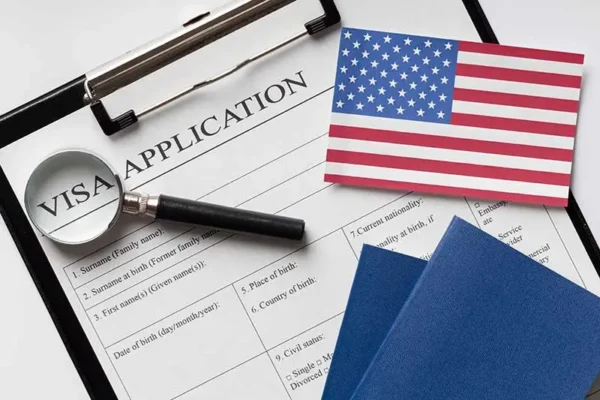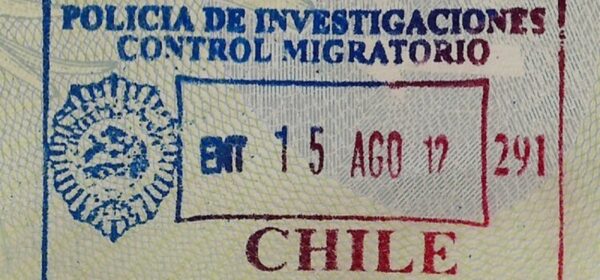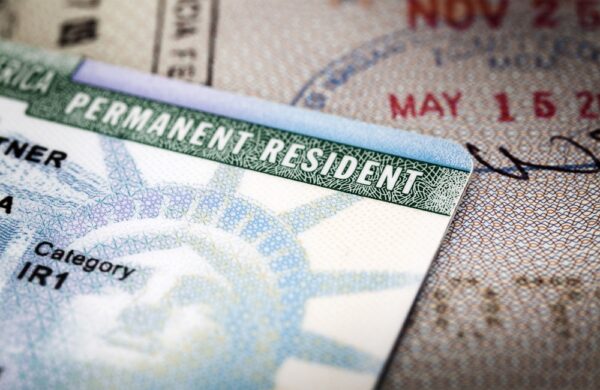An employment permit is required to be legally eligible in the United States, just like most countries worldwide. So, when migrating to another country and hoping to work there, you must apply for a work visa that includes this permit. This is done to keep track of the labor market and save jobs for citizens and authorized foreign workers. There are different types of work visas in the US, each with unique merits and limitations. Understanding the perks associated with each is important so you don't get one that doesn't suit your plans.

The Different Types of Work Visas in The US
We have put together the most common types of work visas for you. We also highlighted some important information on each one. So, if you recently got a job or want to work in the US, this list is for you. Let's get started.
1. Temporary Work Visas
A temporary work visa is also known as An employment-based non-immigrant visa. It is one of the best ways to migrate to the USA. These visas are issued to foreign nationals who plan to work and live in the US for a given period. In many cases, employees who want to live permanently in the US can get in with a temporary work visa. After this, qualified immigrants can upgrade their status to permanent residents. The most common temporary work visas are highlighted below:
i. H-1B Specialty Occupation
The H-1B has the highest demand rate among the types of work visas in the US. It is a temporary worker visa. Foreign workers with specialties in fields like computer science or engineering are eligible for this visa. The United States is a hub for big tech firms and engineering corporations and as such, everyone wants a slice of the pie.
Furthermore, since it is in such high demand, the authorities have placed an annual cap on the supply. Although thousands of candidates are granted the H-1B visa every year, the massive demand makes the approval rate seem low. Candidates for this type of visa must have a bachelor's degree (or higher) in specific fields. Also, having a specialty position job offer from a US employer increases your chances of qualifying for this visa.
ii. O-1 visa
To qualify for an O-1 visa, you must be extraordinarily skilled in your field. Foreign workers can acquire this type of work visa only when they have demonstrated their expertise. To do this, the candidates must provide proof of proficiency in their field and should be known for their achievements within and outside their country of residence.
People who perform extraordinarily in sports, entertainment, business, sciences, arts, and education can be eligible for the O-1 visa. This is one of the types of visas that athletes, musicians, and movie stars use to get into the USA. Furthermore, people who support extraordinarily skilled workers in their profession are also eligible. For instance, artists may qualify with their crew members or accountants with their secretaries.
iii. E Visas
The E-1 and E-2 are types of work visas for people from certain countries who want to visit the USA for treaty trade activities. An E-1 work visa qualifies you to work as a treaty trader, while the E-2 work visa lets you work as a treaty investor.
For context, a Treaty trader is a citizen of a given country that has a trade agreement with the US and performs ongoing trade activities. On the other hand, you qualify as a Treaty investor when you have invested a large amount of money into a US business. However, treaty investors are required to provide proof that they are coming to develop their investments.
iv. L-1 Visa
The L-1 visa is another temporary worker visa for employees working with foreign businesses that have direct affiliations with US companies. Since their job may require them to visit the US frequently, employees need to apply for this type of work visa. It also comes in handy if their employers transfer them to their US location. Furthermore, when a foreign company transfers an employee to set up an office in the US, this visa allows them to do that.
To be eligible, an employee must have worked in the foreign organization for at least one continuous year within a three-year period before entering the US. The L-1 visa is also offered in the L-1A and L-1B categories. The L-1A is for Managers and executives sent to the US to work at or establish a new office. Meanwhile, employees below the manager level may be eligible for an L-1B visa if they have specialized knowledge about the business, its product, or its processes. These factors are crucial for getting approved.
v. Trade NAFTA (TN) Visa
The TN work visa is specifically for citizens of Mexico and Canada as NAFTA professionals. It was created by the North American Free Trade Agreement (NAFTA) to ease approvals for citizens of North American countries seeking to work in the United States. The maximum admission period is three years when a TN enters a US Border, and there is no limit on the number of years a TN visa holder can stay. However, the TN visa status is appropriate for an individual who hopes to apply for US permanent residence.
To qualify for this visa, you need proof that you're a Mexican or Canadian and a job offer from a U.S. employer. Also, it's important to have a position that qualifies you under NAFTA. Some common NAFTA professions are lawyers, scientists, engineers, accountants, and pharmacists.
vi. E-3 Visa
The E-3 visa is another temporary worker visa for people with a specialty occupation. It is among the types of work visas limited to certain countries. Only foreign workers from Australia are eligible for the E-3. Moreover, the applicant's spouses and children (under the age of 21) can benefit as dependents.
Like other specialty visas, only a limited number of these visas are issued every year. The visas given to spouses and children of applicants are not part of the annual cap. Furthermore, you need a bachelor's degree (or a foreign equivalent), a specialty occupation job offer from a US employer, and a professional skill set required to fill the specialty position. This visa is temporary and requires renewal to keep working in the USA.
vii. H2-A Temporary Agricultural Visa
The H2-A visa is one of the most common types of work visas. Foreign workers who want to work in the USA on a seasonal basis are eligible for this visa. It provides workers for US employers to fill temporary positions when there's a shortage of domestic employees. The jobs are mainly but not limited to cultivating, planting, and harvesting. These temporary agricultural worker visas can last up to one year each, with a three-year maximum.
It is also a non-immigrant visa limited to citizens from 86 qualifying countries. The two basic requirements for an H2-A visa to be approved are that the job must be seasonal and that the employer provides proof that no US workers are available to fill the positions.
2. Permanent (Immigrant) Workers
Foreign nationals with the right job skills can apply for employment-based green cards. These permanent visas allow them to migrate with their spouses and children, who are coming as dependents. Furthermore, the US grants 140,000 of these visas yearly. You can get permanent residence in the US via education, expertise, and skill proficiency. There are five categories of employment-based migrant visas, and most require an existing offer of employment from a US employer with the proper labor certification. The US Department of Labor must first verify that there are insufficient workers with this skill set within the country, and the hiring does not take a job away from a U.S. citizen. The five types of permanent work visas are:
i. First Preference EB-1
The EB-1 visa is designed for individuals from other countries who possess exceptional abilities, such as professionals in business, educators, scholars, scientists, artists, and athletes. Labor certification is not required for this visa category. If the primary visa holder's I-140 (green card) form is approved, the family members of EB-1 visa holders can seek admission to the US under E-14 or E-15 immigrant status.
ii. Second Preference EB-2
EB-2 visas are offered to professionals who hold an advanced degree or its foreign equivalent, individuals with at least ten years of experience in a specific field, or those whose employment is in the national interest of the US. Labor certification is required for all categories except the third category. Family members of EB-2 visa holders can seek admission to the US through E21 or E22 forms if the primary visa holder has an approved I-140 (green card) form.
iii. Third Preference EB-3
Applicants eligible for EB-3 visas include individuals with a bachelor's degree or its foreign equivalent, as well as skilled and unskilled workers who have a non-temporary job offer from a US employer. Labor certification is required for each eligibility category within EB-3. Family members of EB-3 visa holders can seek entry into the US through specific forms for spouses or children, provided the visa holder has an approved I-140 (green card) form.
iv. Fourth Preference EB-4
EB-4 visas are a specific type of visa. Eligible candidates include but are not limited to, certain religious workers, staff of US foreign service posts, retired staff of international organizations, and noncitizen minors who are under the care of US courts. Labor certification is not required for this visa category. Some families may qualify for entry.
v. Fifth Preference EB-5
The EB-5 visas support the Immigrant Investor Program to promote employment in the US. To take advantage of this program, an individual must invest either $1,800,000 in a new commercial business that hires at least ten full-time US workers or $900,000 in a new commercial project in a targeted employment area that employs at least ten full-time US workers. This type of visa does not require labor certification. Through this program, investors and their families can apply for green cards.
Let's Wrap It Up…
The list above features the most common types of work visas in the US. Similar conditions apply to the UK and other top foreign workers' destinations. Permanent visas are for immigrants and normally include work permits. Meanwhile, temporary visas require you to depart the country before the date it expires unless you reapply and it is extended. Your job, age, country of origin, and other eligibility criteria determine which one you should pursue. Also, every visa has its unique set of application requirements. So, it is important to get it right to avoid consequences.
















